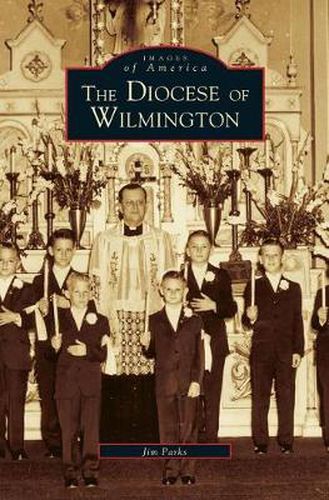Readings Newsletter
Become a Readings Member to make your shopping experience even easier.
Sign in or sign up for free!
You’re not far away from qualifying for FREE standard shipping within Australia
You’ve qualified for FREE standard shipping within Australia
The cart is loading…






This title is printed to order. This book may have been self-published. If so, we cannot guarantee the quality of the content. In the main most books will have gone through the editing process however some may not. We therefore suggest that you be aware of this before ordering this book. If in doubt check either the author or publisher’s details as we are unable to accept any returns unless they are faulty. Please contact us if you have any questions.
The Catholic faith was first brought to the peninsula that lies between
the Chesapeake and Delaware Bays in the seventeenth century by Jesuit
priests who rode circuit from the Maryland colony, offering Mass and bringing
the sacraments to private homes. As the country grew, so too did the Catholic
community on Delmarva, and many new churches and missions were founded.
From the earliest established church–St. Francis Xavier Mission in Cecil
County, Maryland, founded in 1704–to Salesianum School, the first high
school in Delaware to be racially integrated, from the involvement in the diocese
of American saints John Neumann and Elizabeth Ann Seton to a variety of
religious orders and organizations, these honored institutions and remarkable
individuals helped to shape the minds and spirits of young and old alike
The story of the Diocese of Wilmington, which split off from the Diocese of
Philadelphia in 1868, is not just one of church construction dates–it is the story
of its people. From the colorful settlement of French exiled after a slave rebellion
in Haiti to the New World immigrants of Irish, German, Italian, Polish, and
later, Hispanic descent, the Catholic community in the region has been diverse,
vibrant, and steadfast in a shared faith. From its humble beginnings, the diocese
has grown to serve a population of more than 190,000 members with 56 parishes,
20 missions, and 37 schools and has fostered a strong civic tradition in athletics,
theater, and community festivals.
$9.00 standard shipping within Australia
FREE standard shipping within Australia for orders over $100.00
Express & International shipping calculated at checkout
This title is printed to order. This book may have been self-published. If so, we cannot guarantee the quality of the content. In the main most books will have gone through the editing process however some may not. We therefore suggest that you be aware of this before ordering this book. If in doubt check either the author or publisher’s details as we are unable to accept any returns unless they are faulty. Please contact us if you have any questions.
The Catholic faith was first brought to the peninsula that lies between
the Chesapeake and Delaware Bays in the seventeenth century by Jesuit
priests who rode circuit from the Maryland colony, offering Mass and bringing
the sacraments to private homes. As the country grew, so too did the Catholic
community on Delmarva, and many new churches and missions were founded.
From the earliest established church–St. Francis Xavier Mission in Cecil
County, Maryland, founded in 1704–to Salesianum School, the first high
school in Delaware to be racially integrated, from the involvement in the diocese
of American saints John Neumann and Elizabeth Ann Seton to a variety of
religious orders and organizations, these honored institutions and remarkable
individuals helped to shape the minds and spirits of young and old alike
The story of the Diocese of Wilmington, which split off from the Diocese of
Philadelphia in 1868, is not just one of church construction dates–it is the story
of its people. From the colorful settlement of French exiled after a slave rebellion
in Haiti to the New World immigrants of Irish, German, Italian, Polish, and
later, Hispanic descent, the Catholic community in the region has been diverse,
vibrant, and steadfast in a shared faith. From its humble beginnings, the diocese
has grown to serve a population of more than 190,000 members with 56 parishes,
20 missions, and 37 schools and has fostered a strong civic tradition in athletics,
theater, and community festivals.